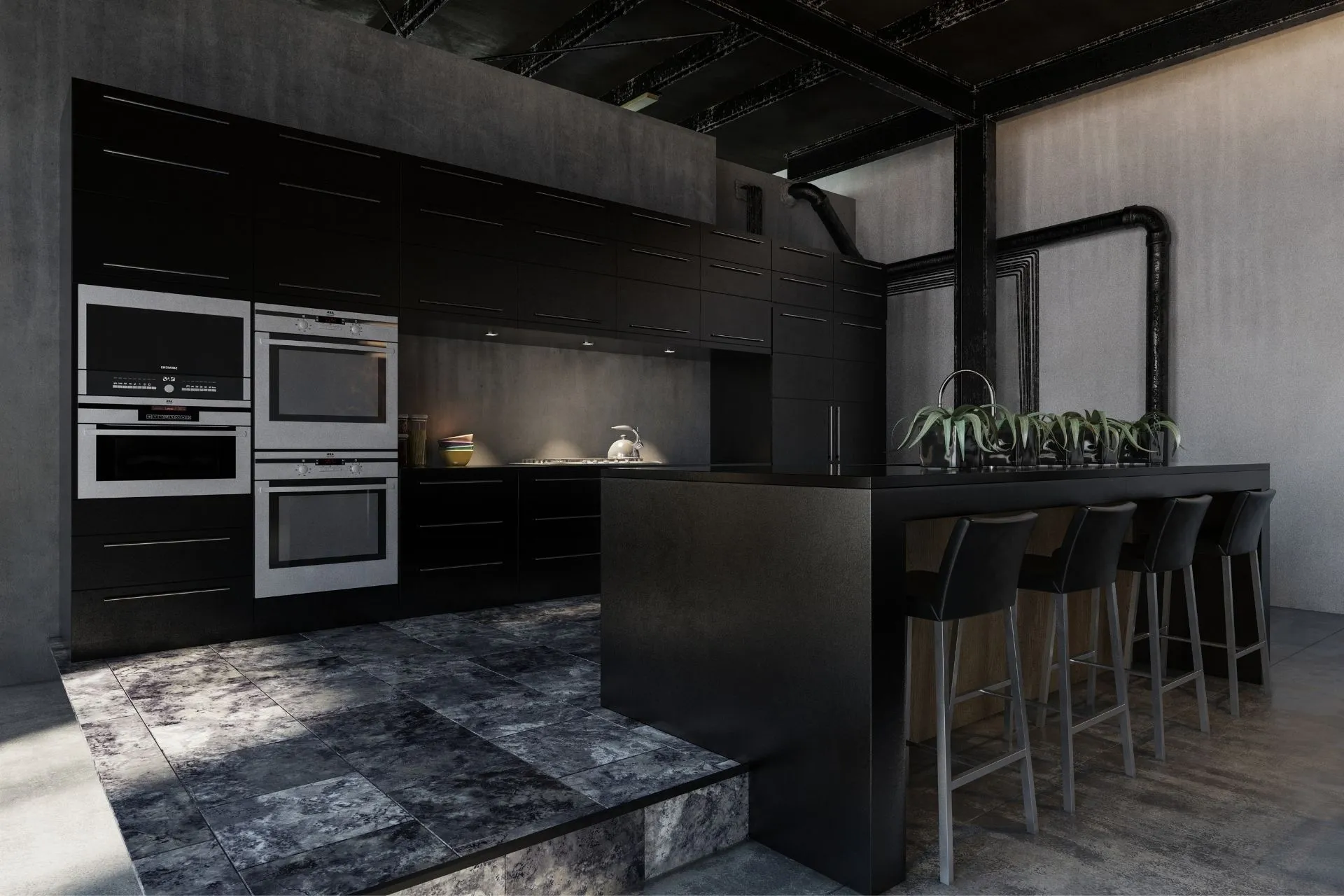Gothic Kitchen Decor vs Classic Design [Overview]
When it comes to kitchen design, two prominent styles often capture homeowners’ imaginations: gothic and classic. Both offer unique aesthetics and create distinct atmospheres, but they cater to different tastes and preferences. This ultimate guide delves deep into gothic kitchen decor versus classic design, providing a comprehensive comparison to help you decide which style best suits your personality, lifestyle, and home. We’ll explore the key elements, aesthetic differences, functional considerations, and cost implications of each, ensuring you have all the information needed to make an informed decision. Whether you’re drawn to the dark romance of gothic or the timeless elegance of classic design, this guide will illuminate the path to your dream kitchen.
Understanding Gothic Kitchen Decor
Gothic kitchen decor embraces the dramatic, the mysterious, and the historically rich. It draws inspiration from the Gothic architectural period, characterized by pointed arches, vaulted ceilings, and intricate details. This style creates a sense of grandeur and often incorporates dark, moody color palettes and ornate elements. The gothic aesthetic is not for the faint of heart; it’s a bold statement that transforms the kitchen into a unique space with a captivating atmosphere. Think of it as a modern interpretation of a medieval castle, adapted for contemporary living while retaining the core elements of gothic design.
Key Elements of Gothic Kitchen Design
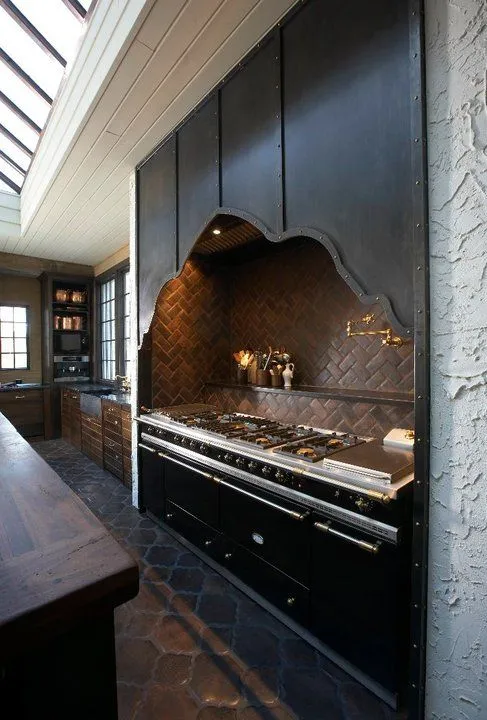
Several key elements define gothic kitchen design. These components work in concert to create the style’s distinctive look, evoking a sense of history, drama, and sophistication. Understanding these elements is essential for anyone considering incorporating this design style into their kitchen. The goal is to create a space that is both aesthetically pleasing and functional. Here’s a closer look at each element:
Dark Color Palettes
Dark, rich colors are at the heart of gothic design. Deep hues like charcoal gray, black, burgundy, and forest green set the tone, creating a moody and intimate atmosphere. These colors often serve as the foundation for the kitchen’s design, with lighter accents used to provide contrast. The use of dark colors can make a space feel more enclosed, offering a sense of privacy and seclusion. To prevent the kitchen from feeling too dark, careful consideration should be given to lighting, ensuring that the space is well-lit and inviting.
Architectural Details
Architectural details are crucial in defining the gothic aesthetic. Pointed arches, vaulted ceilings, and intricate moldings add depth and character to the space. If a kitchen doesn’t have these features, incorporating gothic-inspired architectural elements, such as decorative corbels, can evoke the desired style. Windows often feature intricate tracery or leaded glass, further enhancing the gothic feel. These details, even when subtle, play a significant role in creating the authentic gothic design.
Ornate Hardware
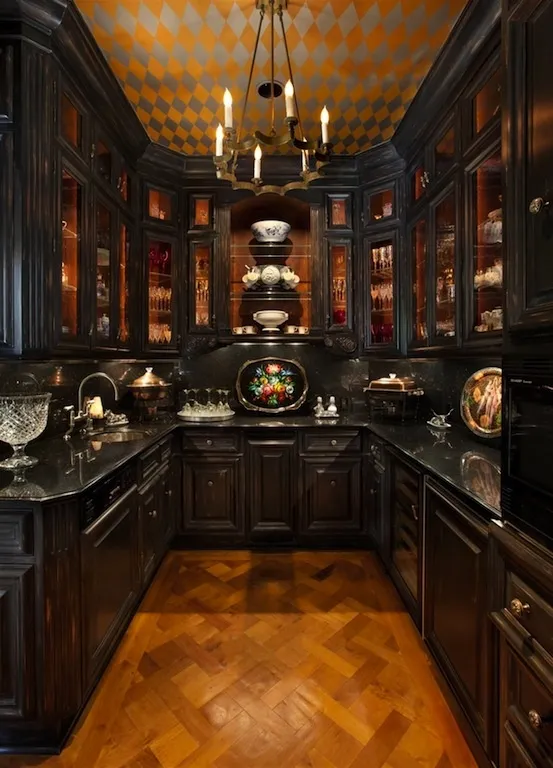
Ornate hardware is another defining feature of gothic kitchens. Think of antique-style handles, knobs, and pulls made of iron or other dark metals. These details add a touch of luxury and reinforce the historical references that underpin the style. The hardware can be a focal point, drawing the eye and adding visual interest to the cabinetry and other furnishings. Choosing hardware with intricate designs and a weathered finish further enhances the gothic aesthetic.
Gothic-Inspired Furniture
Gothic-inspired furniture includes pieces with dark wood finishes, intricate carvings, and strong, bold lines. Dining tables, chairs, and kitchen islands can incorporate gothic elements, such as pointed arches or trefoil designs. These furniture pieces often serve as a statement within the kitchen, reinforcing the overall design theme. Consider adding a large, imposing table with a dark finish or a display cabinet with leaded glass doors to enhance the gothic feel.
Understanding Classic Kitchen Design
Classic kitchen design exudes timeless elegance and sophistication, drawing inspiration from various historical styles, such as Georgian, Victorian, and French country. It’s characterized by clean lines, balanced proportions, and a focus on high-quality materials and craftsmanship. Classic kitchens are designed to be enduring and functional, with a warm and inviting atmosphere that appeals to a wide range of tastes. This style is a safe choice, as it offers a sense of tradition and simplicity that is always in style.
Key Elements of Classic Kitchen Design
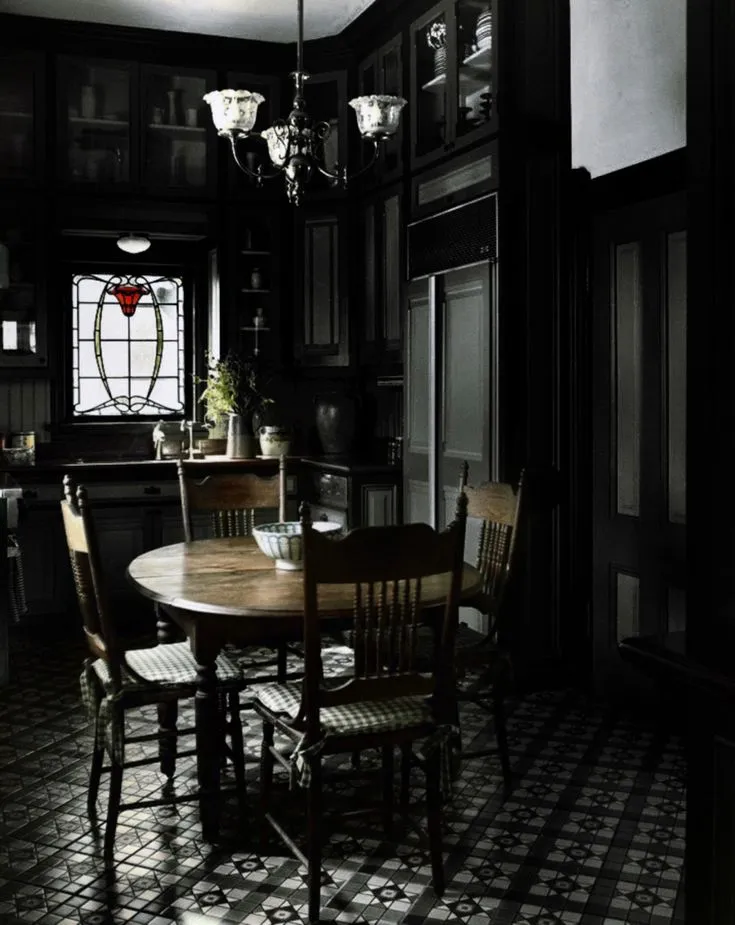
Several key components make up a classic kitchen design. These components work in harmony to provide an enduring, sophisticated aesthetic. The goal is to establish a kitchen that is welcoming and well-organized, and that feels both inviting and functional. The key elements of classic kitchen design include:
Neutral Color Palettes
Neutral color palettes are a cornerstone of classic kitchen design. Colors like white, cream, beige, and soft grays create a sense of brightness, spaciousness, and timelessness. These neutral backgrounds also provide flexibility, allowing for the easy incorporation of accent colors through accessories and decor. A neutral palette creates a calm and inviting ambiance, and it is ideal for creating a timeless aesthetic.
Traditional Cabinetry
Traditional cabinetry, such as raised-panel doors and simple, elegant profiles, defines the classic style. The cabinets are typically constructed from high-quality wood and can be painted or stained in various colors. Careful attention to detail is essential, with a focus on symmetry and balanced proportions. Details such as crown molding and decorative trim enhance the classic look of the cabinetry, providing a sense of sophistication.
Simple Hardware
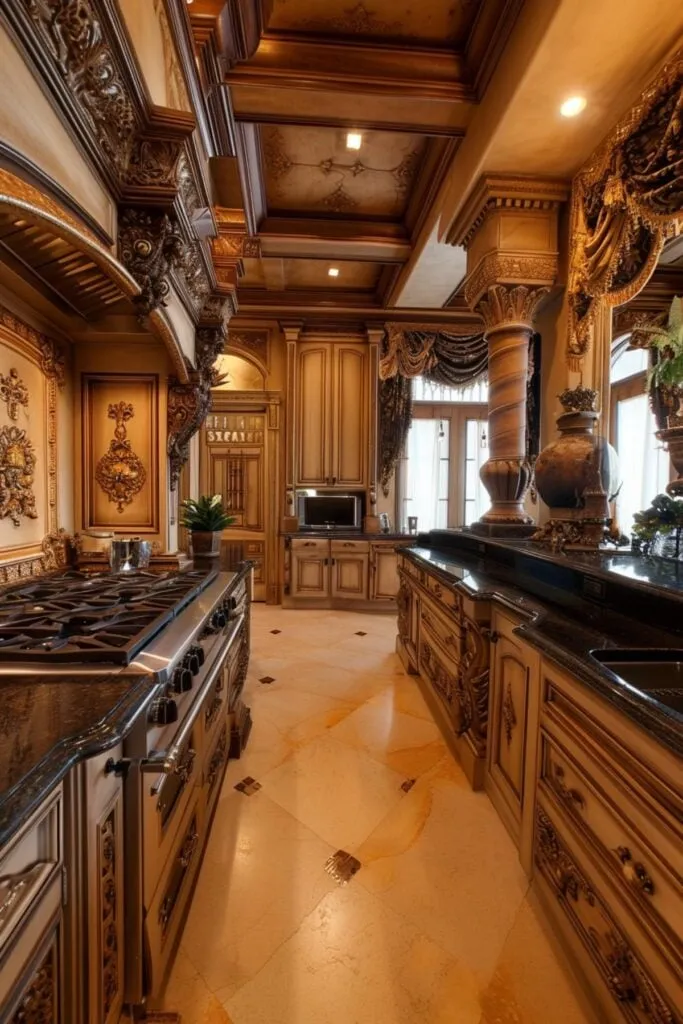
Simple hardware, such as knobs and pulls in brass, nickel, or chrome, complements the understated elegance of the cabinets. The hardware is chosen for its functionality and aesthetic appeal, with a focus on quality and durability. The goal is to choose hardware that is understated and contributes to the overall aesthetic, rather than drawing undue attention. This minimalist approach underscores the timeless quality of classic design.
Classic Furniture
Classic furniture includes pieces that are both stylish and functional. Dining tables with clean lines, comfortable chairs, and elegant bar stools are common choices. The furniture is typically made from high-quality materials, such as wood or upholstered fabrics, ensuring both durability and aesthetic appeal. Pieces are chosen to complement the existing cabinetry and design, creating a cohesive and inviting space.
Gothic Kitchen Decor vs Classic Design [Comparison]
Choosing between gothic and classic kitchen design involves comparing several aspects of the two styles. This includes aesthetic and visual appeal, functionality, cost considerations, and the ongoing requirements of maintenance. By examining these factors, you will be better positioned to choose the style that best suits your individual preferences and needs.
Aesthetic and Visual Appeal
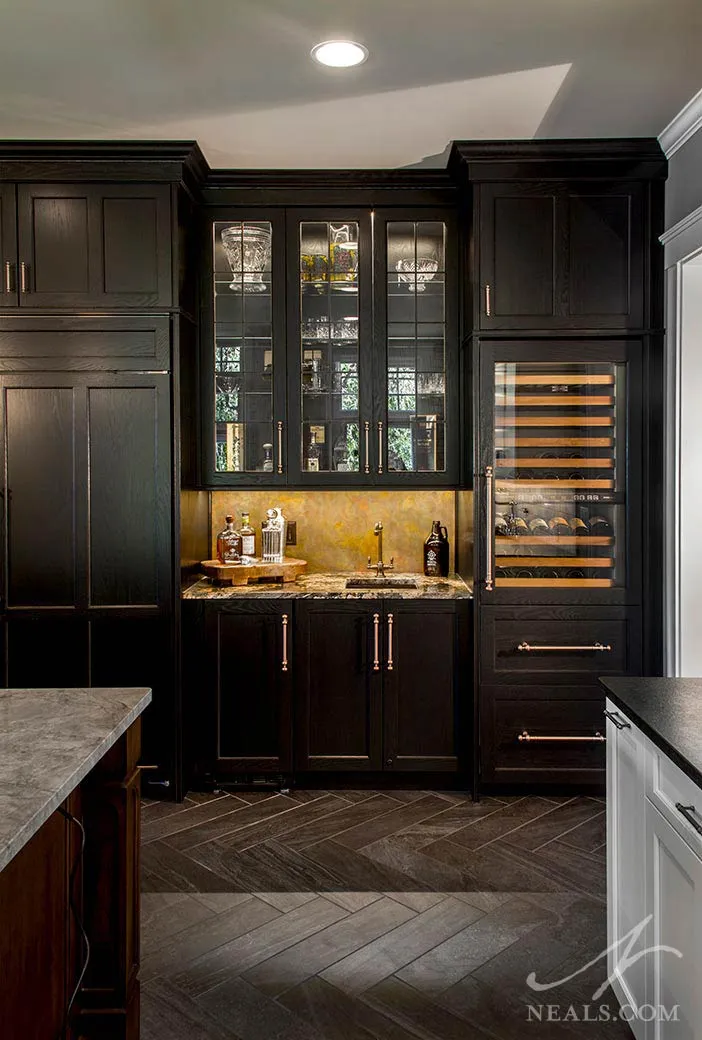
Gothic kitchens are striking and dramatic, with a focus on creating a unique and atmospheric space. Classic kitchens evoke a sense of timeless elegance, with balanced proportions and an emphasis on quality materials. Gothic designs stand out, while classic designs are more conservative and will fit many tastes. The contrast is stark; it is up to personal preference.
Functionality and Practicality
Both gothic and classic designs can be functional. However, the layout and design considerations vary. In gothic kitchens, dark colors can impact visibility. Classic kitchens often offer greater flexibility and ease of use due to their lighter color schemes and simpler designs. It is important to consider the layout, storage space, and overall flow of your kitchen, as well as your personal cooking habits and requirements. Both styles can be adapted to meet different needs.
Cost Considerations
The cost of a gothic or classic kitchen depends on several factors, including the materials used, the complexity of the design, and the level of customization. Gothic kitchens can sometimes be more expensive due to the use of unique architectural details and high-end finishes. Classic kitchens can vary in price, depending on the materials and level of customization. It’s vital to set a budget and carefully consider your design choices to stay within your financial means.
Maintenance and Upkeep
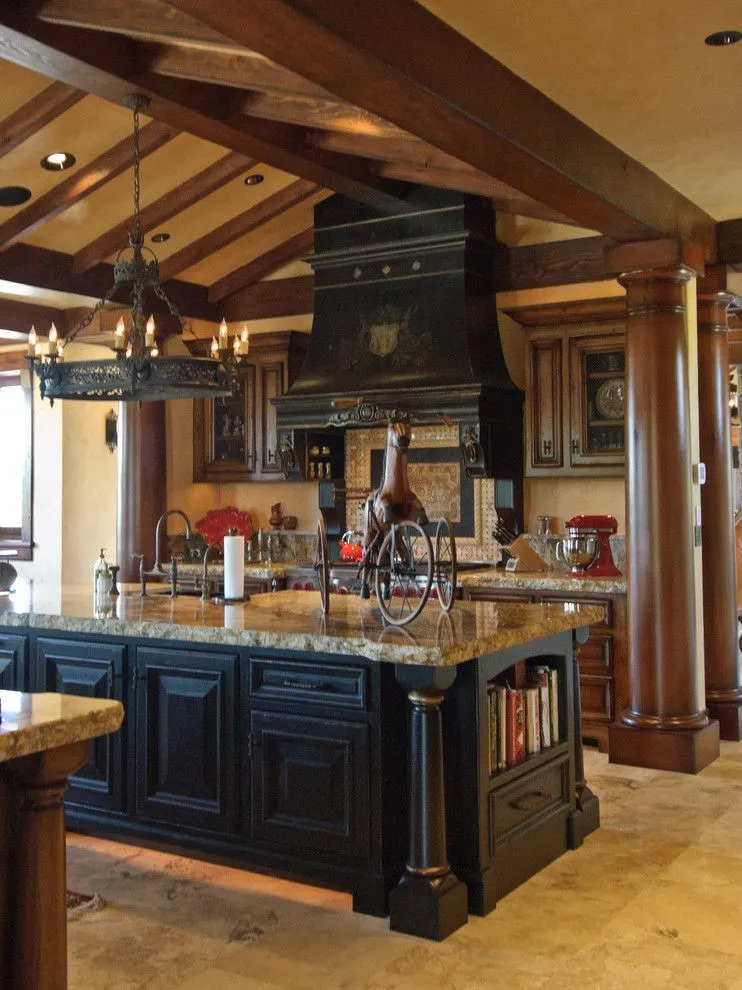
Maintenance needs are influenced by both the materials used and the design choices. Dark colors and ornate details might require more frequent cleaning. Light-colored surfaces in classic kitchens might show dirt and stains more readily. Both styles require regular upkeep to maintain their appearance. It’s important to consider your lifestyle and how much time you’re willing to devote to maintaining your kitchen’s appearance.
Making Your Choice
The ideal kitchen style depends greatly on personal taste and lifestyle. Both gothic and classic designs offer benefits, and your choice is determined by your preferences, budget, and how you intend to use the kitchen.
Personal Preferences and Lifestyle
Consider your personal preferences and your lifestyle. Do you prefer a dramatic, moody ambiance, or a bright, inviting space? Do you value historical details, or a more streamlined aesthetic? Consider how you use your kitchen. Do you cook frequently, or is it primarily a place for entertaining? All these factors will inform your choice.
Factors to Consider
Consider your budget, the size and layout of your kitchen, and your existing home decor. Research both styles, gathering inspiration from magazines, online resources, and showrooms. Visualize how each style will fit into your home and complement your lifestyle. Make sure the design fits your needs and budget, while also reflecting your personal style and making you comfortable.
Finding Inspiration
Look at different examples of gothic and classic kitchens. Visit showrooms and browse home design websites. Create mood boards to visualize your ideas. Talk to interior designers or contractors with experience in both styles. Gather information and inspiration to help you create your dream kitchen design.
Where to Start
Start by defining your preferences, establishing a budget, and assessing your kitchen space. Then, start gathering inspiration and research design options. Talk to professionals to develop a plan that brings your dream kitchen to reality. The key is to make the right choice for your lifestyle and personal taste.
